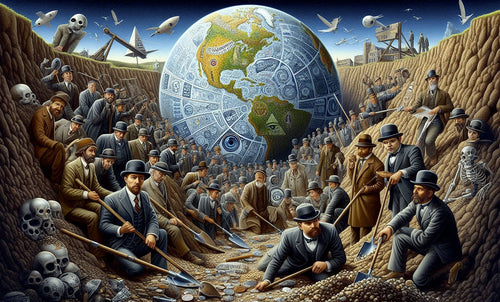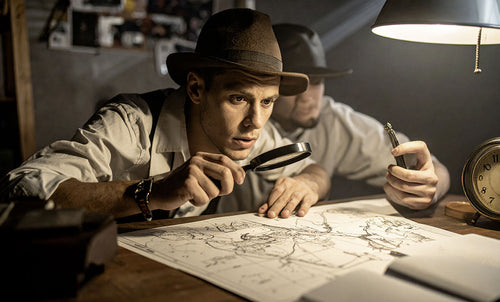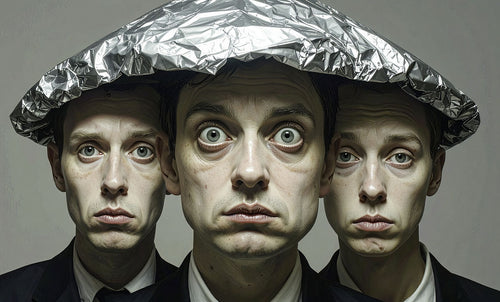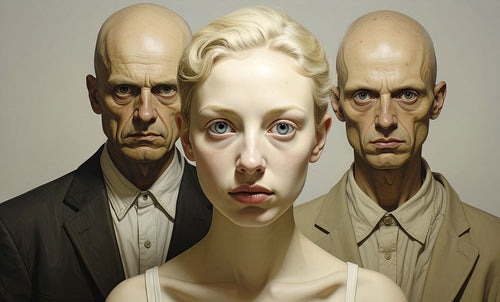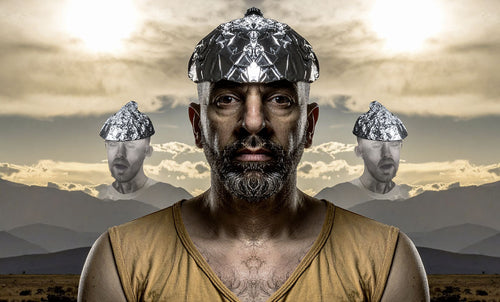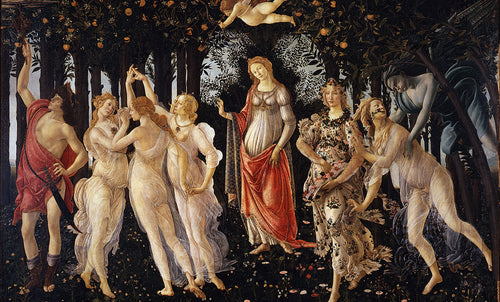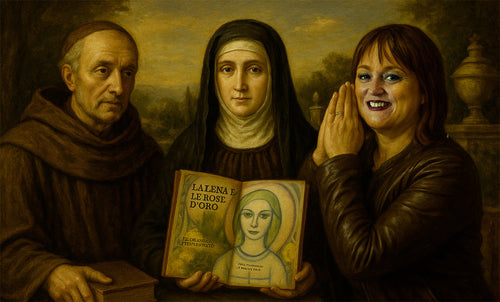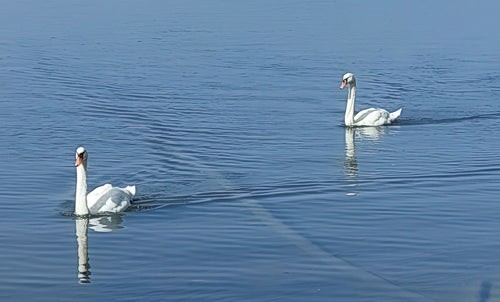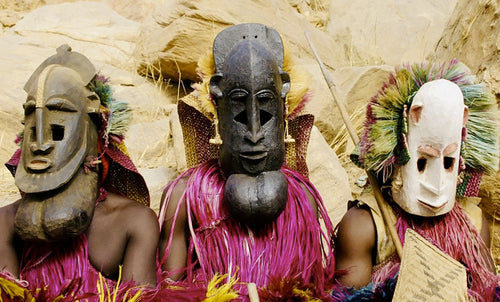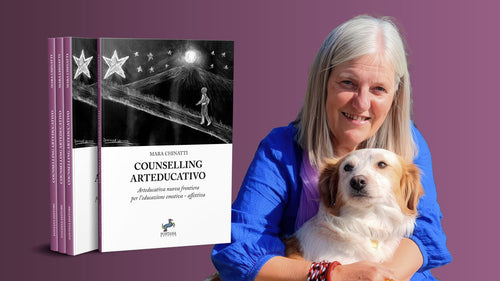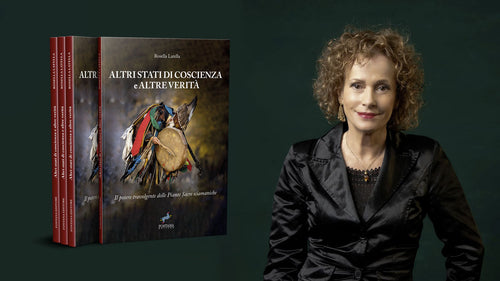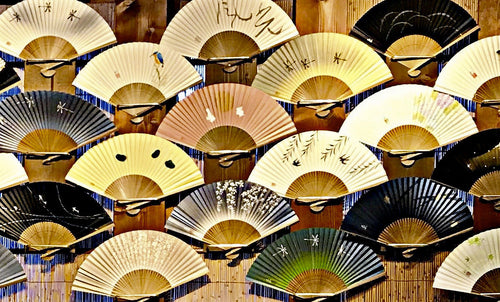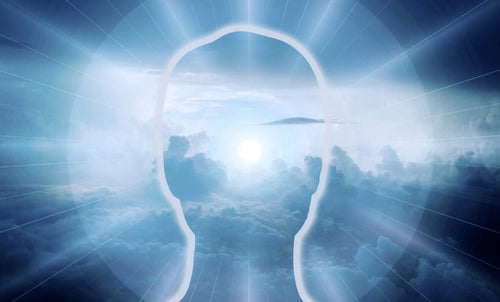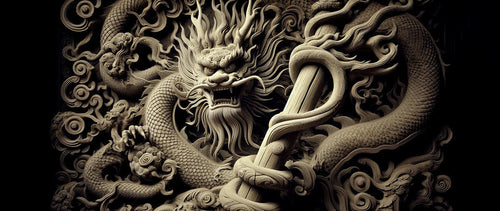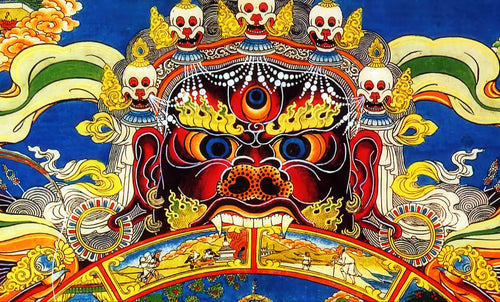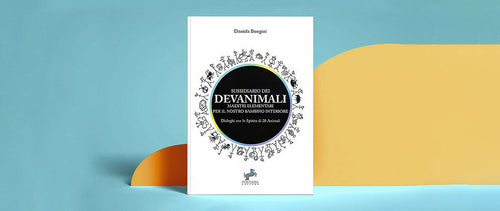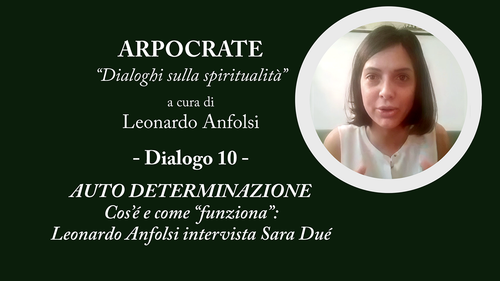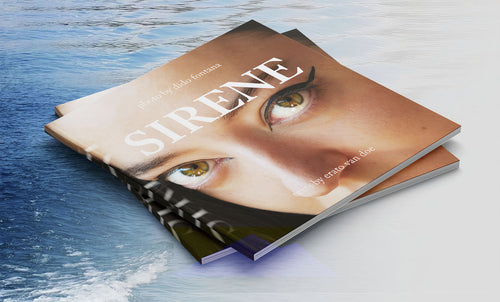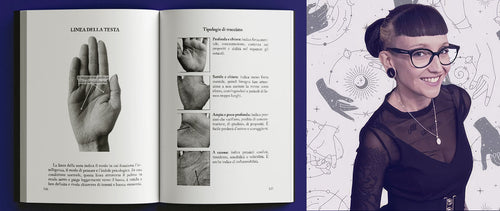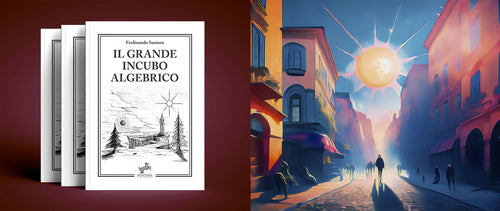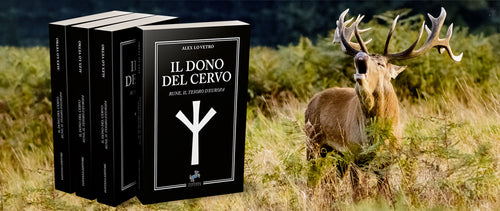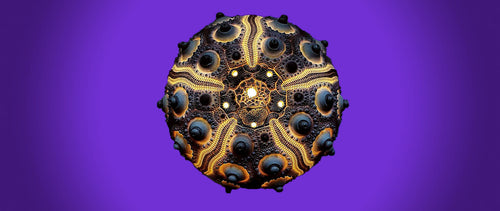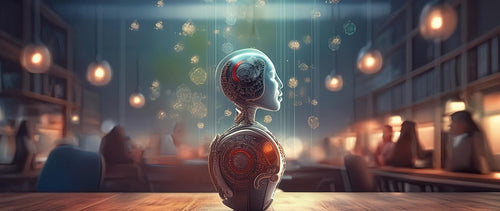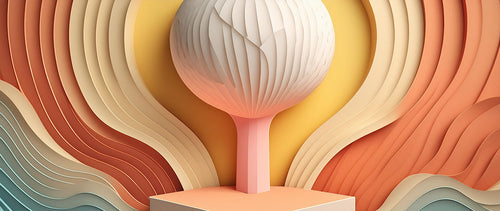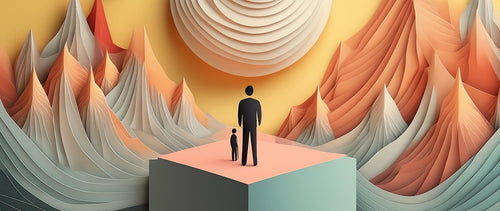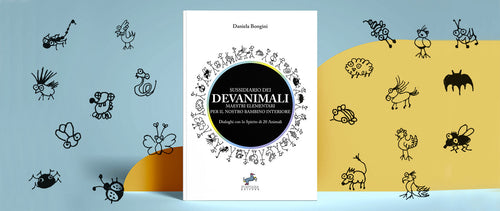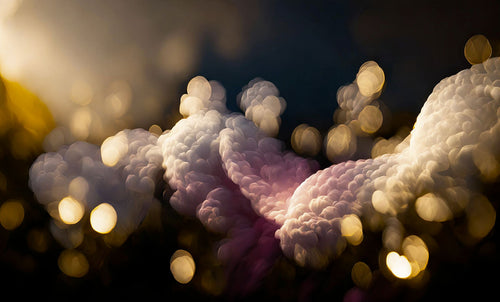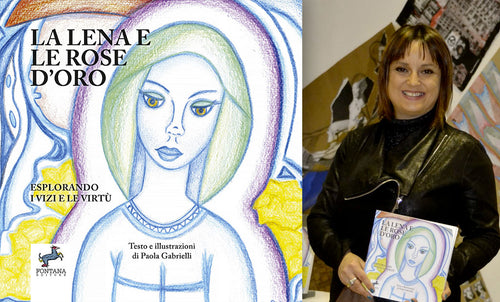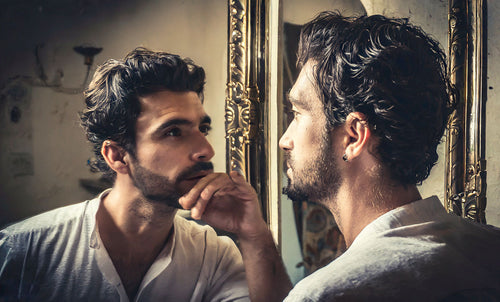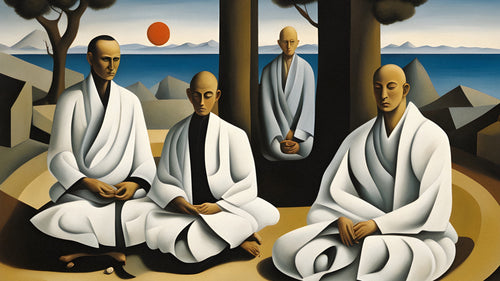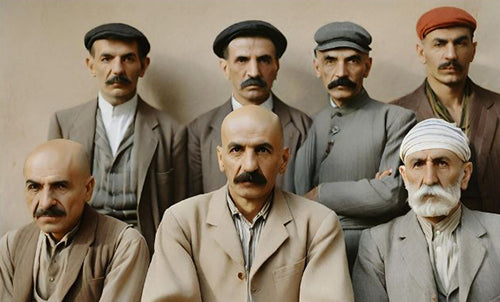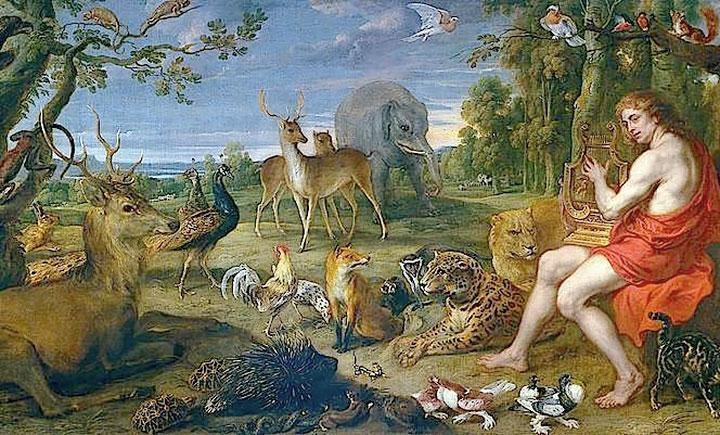
Sacred art – Leonardo Anfolsi interviews Marco Bagnoli
Leonardo AnfolsiMarco Bagnoli is an artist who has always maintained a sacred sense of art and inspiration.
He was already introduced to us in the second issue of NitroGeno by the critic, curator and art expert Pierluigi Tazzi, together with other artists close to the idea of transformation/creation and operativity that manifest themes close to Alchemy. After his scientific training culminating in a degree in chemistry, Marco Bagnoli imposed himself on the artistic scene already in the second half of the Seventies and since then his presence has been continuous, pervasive and original. After his scientific training and a degree in chemistry, Marco Bagnoli imposed himself on the artistic scene already in the second half of the Seventies and since then his presence has been continuous, pervasive and original. Considering that contemporary art pursues the abandonment of tradition and, often, of any sense of sacredness, Marco Bagnoli represents a diversity that has attracted the praise of Andy Warhol - who recommended him to American collectors of the period - Joseph Beuys and Harald Zeeman, Jerry and Gilda Sherman of Baltimore, as well as the attention of very refined collectors, including the Buby couple and Lucrezia de Domizio Durini, the Nancy Olnick couple and Giorgio Spanu in Garrison NY, Christian Stein in Milan, Mario and Dora Pieroni gallery in Rome, Vittorio Dapelo in Genoa, Longo in Cassino and then prestigious museums of Contemporary art such as those of Rivoli, Lyon and Prato. One of his sculptures is installed in the Villa Medicea of Pratolino, a villa founded in the 16th century by the Grand Duke alchemist - Francesco I De Medici - who had the alchemist Bernardo Buontalenti as an architect in Pratolino. Among the symbols most used by Marco Bagnoli are the “red band”, a geometric figure drawn with the golden proportions, the “hot air balloon” that reminds us of the movement of circulation inside a flask, but also the circulation of energy in the human system, and the quincunx, that is the mandalic or cruciform arrangement with a center and four directions. In addition, as Pier Luigi Tazzi observes, the "X' of the quincunx also represents the final contraction of the formula SPACEXTIME, and of its derivative IOXTE, which recurs in many of his works since 1975 and is the title of his publications. Furthermore, the use of the quincunx arrangement also presents itself as a model of continuous expansion: each of the four points of a quincunx can virtually become the central point of a further quincunx, ad infinitum.
LA - What is the sacred in art for Marco Bagnoli?
MB - The Sacred is today perceived in a widespread way, it is dispersed or suspended in human experience, sometimes being “spirituality” or not even having a designation; it is less and less concentrated in specific points of experience such as religious, mystical, ascetic. Certainly artists do their part in this dispersion with their dissimulation, and so today the sacred reminds us of a certain paradox, being everywhere but not having a center in any precise point.
LA - If I'm not mistaken, take classical architectural forms as an example to derive a meaning that concerns perception, and therefore the deep and therefore aesthetic meaning.
MB - Yes, indeed. The ancient shape of the dome, if we take it from Byzantine architecture, as from Jewish and Islamic architecture, was hemispherical, wanting to refer to the archetype of the celestial sphere, thus appearing without a cusp and lacking a centrality immediately detectable by the eye; in this circumstance each observation point could be a point of centrality with respect to an axis, which in reality was not there or was enormous or, so to speak, included in the whole dome. The task of the sacerdos of each religion was to bring the multitudes to enter into a relationship with the sky by reuniting all the perspectives in a cohesive whole of loss-faith-discovery. So Brunelleschi and the others, with their Renaissance revolution, do nothing other than center a perspective axis that excludes other possibilities. Here we are, with this architectural metaphor in proximity to the sacred, never in its trajectory. And isn't it perhaps the case that, today, profanity can be declined in any case as proximity to the Sacred? And so the Sacred - as dispersed spirituality - affirms itself as the rediscovery of the only given centrality, to which the I Am, the Pure Witness and the Consciousness understood as - and brought back to an - awakening refer.

LA - It seems to me that a particular work of yours, the one at the Cappella Pazzi, was an important moment of revelation for you in this sense...
MB - In the second issue of the magazine Spazio x Tempo, Paolo Marinucci, in his article “Kevalalila” writes about “a circumference that is everywhere, while the center is nowhere” , adding a note that refers to Ibn Arabi, according to Guenon.
This phrase has been quoted a lot since ancient times. In "Other Inquisitions" Jorge Luis Borges quotes a phrase apparently similar, but with the opposite meaning attributed to Hermes Trismegistus which, according to the writer's short story, would in fact be: "God is an intelligible sphere, whose center is everywhere and the circumference nowhere". Borges tells us that Alanus de Insulis found it in the hermetic text Asclepius, written by Hermes Trismegistus, and follows his adventures up to Blaise Pascal. This inversion of meaning coming from a different intention due to different eras and worlds defines, literally and because of these circumstances, a direction that would go towards the dispersion of the cause in the effect. Thus axiality, traditionally conceived in the Christian West as the keystone of the sacred, is dispersed in the conquest of some perspective rendering, while for me every perspective is not enough and I would mean - everywhere - a chessboard in which to orient the gaze when it is freed from the trajectory of a point of view that is either founding or relative.
I wrote: "The center is everywhere and in any direction, the center therefore surrounds the vision" . And I referred to it in relation to a work that I installed in the Pazzi Chapel in Florence, inside the church, in that spherical monument by Brunelleschi where the dome rises on the square shape that supports it. So the chessboard here was reflected in a spherical projection upwards, becoming in the eye a square of light reflected in the dome, which is the sky with its zodiac.

Between the conical emanation of our sight and the sphere of vision that welcomes it, something happens that gives us an unexpected revelation; from the central space, looking up, the conical view goes upwards in tangency with the spherical shape, and this is how a thin iridescent outline is created. It is thanks to the outline, however, indefinite and cosmic, that the occult emanating center is revealed – which remains such even if it is evident.
The ancients played with the word “pupil” as those who do not want to relegate it to a mere anatomical fact. The same will be true for the nature of light, which from Sorahvardi to Einstein will appear increasingly evident but increasingly indemonstrable and ineffable, therefore a universal constant and also an event horizon; for me, a chessboard.
LA - So: if the loss of an axial sense of reference concerns these times, is this loss for you a prophecy, a trace or an epiphenomenon?
MB - Since the Sacred is everywhere today, it is found in all those moments in which it is voluntarily evoked and, above all, linked to the conscience, to the awareness in which an act is performed.
The Sacred today is an opening towards, but it is therefore a clear refusal of any stasis. A concept of the sacred is not very functional to art, more than ever today, whether the sacred in art is requested or avoided. The loss of an axial sense is certainly an interesting consideration, yet it is only one version of the facts, on my chessboard.
When I was working on one of my sculptures, “the hot air balloon” in the Sala Ottagonale del San Gallo at the Fortezza da Basso in Florence, I noticed that there was an octagonal hole corresponding from below to the keystone of the dome up there (point your index finger and gaze towards the ceiling), on the dome, which is also identical in proportion to Brunelleschi's in Santa Maria Novella.
On impulse I thought of filling the octagonal hole with liquid mercury, and so I did.
The fact is that that hole responded geometrically to the keystone, to the cusp of the room, to which it was connected by a geometric axis; well, looking into the pool to look at the cusp by reflection, inevitably, one looked at one's own face. I transposed this element into the installation so that I could look at the top of the hot air balloon by reflection in the mercury - which in this case I called "the missing link" - but I could not see the central cusp of the dome. So I could see the apex of this shape, but not the apex of what this shape contained, while inevitably, looking for that apex, I was forced to contemplate my own face.

LA - What is the connection between the sacred in your art and that of tradition?
MB - The distance from tradition is now stellar.
I was listening to an interview with Lucio Fontana, where first of all he considered how in ancient times there was an enormous quantity of people who worked in art and around it, while today this number has shrunk and the people who live there have become very, very specialized. One would therefore think that in some way art, that art, is no longer necessary. And with this we return to what was said a moment ago. So since artistic creation, as an evocation of an aesthetic tension, cannot but be contagious, this leads us to question that intertwining that was all around art as the engine of culture and civilization.
What about the creation of a workshop, today as then, or the vitality of a cultured clientele?
I wonder how all this can be translated today, or how we can bring about a positive change in the current trend. I think of the volcanic creativity of young artists and how this can find fulfillment, especially when they discover their sincere drive towards the sacred. One of the possibilities is to conceive art in everything and in every daily gesture, as Beuys said, but this too must certainly be considered with caution and in the precise sense in which Beuys produced this consideration.
I want to quote you some sentences from Fontana's interview. (Search among the pages of a book)
“I can’t talk about the future. Man will walk on the moon, on Mars. Art can end. It is not a necessity, despite everything they tell us: eating, sleeping under a roof, protecting yourself from the cold, these are important things. Art is less and less useful, replaced by engineers, by machines. If it wants to continue, it must evolve, become more philosophical.”
This is what I did and have always done, even before reading this interview. In a wild place in the plain of Holland, I flew a hot air balloon from a large embankment specially prepared and which could only be seen by the driver and not by the public that crowded around the event. This was the beginning of something that I understood only later in its full symbolic significance, concerning for example the view from above, as it is - not by chance - in the pictorial vision of Dutch painters and particularly in Vermeer.
This is an irrepressible need to detach oneself from the ground. But the hot air balloon takes flight so that the symbolic meaning of the element of air is affirmed, so that it is chemically broken down into gaseous elements such as nitrogen, hydrogen and so on, as happened with the chemistry of gases by the chemist Cavendish. But no one would have ever thought – before then – of having the need to detach oneself from the ground, but this coincides with the moment in which this need to see from above also changes our vision of what air is. This is a crucial passage from Alchemy to Chemistry, both however conceived in their hidden and founding metaphysical meaning. The practical implication of this passage was precisely the idea of rising to look from above. The solar function of the eye remained uncorrupted, just as a laser from above could also range over details that had not been noticed until then, and yet the sphericity of the Byzantine ikonostasis was lost; but a view from above began to fascinate man, giving him new perspectives.
Art critic Fulvio Salvadori writes about my hot air balloon: “In solitude the eye then acquired an effective solarity, and the power to illuminate things from above at will.”
And again (he reads from a text): “In fact the gaze that rises detaches itself from that of the crowd anchored to the ground and, removing itself from the common sense of actions, then coldly recognizes their multiplicity and simultaneity; every detail that attracts it is then isolated and can be considered separately. However, what had been removed had been, once again, hidden. The flight of the hot air balloon took place in the air in an intermediate region between heaven and earth, pushed upwards by fire, and made it possible for attention to flow over the territory: in flight, in fact, the sight remained subject to the gravitational field of the earth, and was not usually directed towards the sky. The theory of the four elements has a metaphysical essence and is therefore not tied to history and its events: it indicates in a metaphorical sense the coordinates of an internal vision of the soul. The rising of the hot air balloon had caused a transformation of those coordinates, but had not eliminated them” .
LA - Regarding Alchemy – which you have often evoked in your works – what do you want to tell us, and what are the key historical moments that you have experienced in your alchemical evocations?
MB - First of all I have to make two parallel considerations. The first is that, clearly, Alchemy is a theme that inspires my art; moreover, I was born as a graduate chemist, even if this was only an appetizer compared to my later interest. But, above all, the second is that as an artist aware of my function in the world, I can repeat what Duchamp said to Schwarz when the latter defined him as an alchemist: "if I was an alchemist, this happened without me knowing it" .
James Elkins also noticed the contiguity between art and alchemy but also the difference in function between alchemist and artist. And perhaps thanks to the alchemical language we can better approach the creative parable of, say, a painter. I quote a few lines:
“Yet any book on the subject is doomed to fail; For it would have to make explicit many things that artists do not even say to themselves, and would drastically violate the boundaries between the experience of painting and its meaning. The same is true of Alchemy in both cases the underlying act is spiritual while the language of its disclosure is inconsistent and weak.”
Here, you see, it is precisely this principle that is equivalent in art and in Alchemy, where explicitness is lacking. And this is why the symbol manages to help so effectively and to express these mysteries.
"In explicating spiritual meaning in painting, Alchemy has the advantage over theology, Jungian psychology or art criticism of being a sister discipline.
Alchemy is also shy, it experiments with substances and lets them silently fill with meanings instead of declaring their presumed preciousness” .
LA - It's certainly no coincidence that you worked in alchemical places like Florence and Prague, am I right?
MB - Yes, of course, and in those places I have often expressed myself in museum exhibitions with symbols linked to alchemy, appreciating the role that alchemy had and still has in civilization and in our history. Italy throbs with alchemy and also in Paris, as in Prague, you can feel this very strong and still alive bond.

LA - Your art comes from both the pagan and mysterious Europe, and from ancient Greece, as well as from the East, it crosses the Christian West with a metaphysical intuition and also thanks to the hermetic vision that you often cite; what impact and what function could it have in Anglo-Saxon art and culture and, in particular, American, where this research is less historicized and matured in culture?
MB - The fact of historicization – which is expressed in events – does not have much relevance in the possibility that art is fully expressed. I believe that the impact of art is more sincerely and truly metaphysical, that it does not happen in a historical path; in fact when we look for what is the origin of creation – not of creativity which is a limited phenomenon – we realize that to enter into a possible understanding of the origin of the universe we enter a space and a time in which the rules are no longer so “obvious” ; and so passing from classical physics to quantum physics, to conceive the origin of the universe we end up conceiving a black hole, where the rules change completely and seem to go crazy. America as a place, as a myth and as a container of other and various cultures, America as a specificity in itself – due precisely to the containment in a place of such diversity – when it can assume a sincere interest in its own foundations it creates in that moment a relationship with art and with my art that searches for the origin. Moreover, the wonder of the Italian and European Renaissance had this same principle of diversity and revolutionary specificity which, at the time, made a difference, which continues even today as we study it in amazement.
But the only possible real approximation to this revolutionary intuition, therefore, is to approach this fundamental question of the origin, however it is asked, which will change according to the times and cultures. If we go back we can notice key moments in history - and only those we know - from which we receive great inspiration, for example Ancient Greece, the Egyptian Tradition, both of which were a crucial starting point for the Hermeticism that followed and for the Florentine Renaissance. You, as alchemists, know very well what I am talking about, it is the relationship between the micro-cosm and the macro-cosm; all these are different epochal visions that chase the origin that will certainly be foreseen by most, intuited by many and fully realized by a few individuals.

LA - You took the phrase “si sedes non is” from Porta Ermetica, right?
MB - Yes, we wanted to give a name to an artistic movement and we wanted to connect to the Porta Ermetica in Rome. Moreover, we were near Piazza Vittorio where it is located, and symbolically we wanted to create a seat, a chair or a bench underwater, at the bottom of a swimming pool. I was inspired by a speech by Ibn Arabi1, an ancient Sufi Master, and I wanted to represent in some way the position of the body that he reconstructed as an evocative image of an immobile dynamism: that of a man who is about to get up, while he is saying goodbye and is about to leave. But he hasn't got up yet, and yet he is about to do so... And the intention is everything, however small the impulse to the gesture of leaving.
LA - When you put the mercury in the hole of the Fortezza da Basso, which reflects the top of the hot air balloon or your face, didn't you consider putting a mirror there instead?
MB - It's that I already knew about Mercury because I had already used it. I have a background in chemistry, I didn't go to an art school or university. So it was an outcrop of chemistry, a subject I studied for a long time, and certainly also of alchemy, at the moment in which we are doing an interview for NitroGeno and precisely because I am speaking to you.
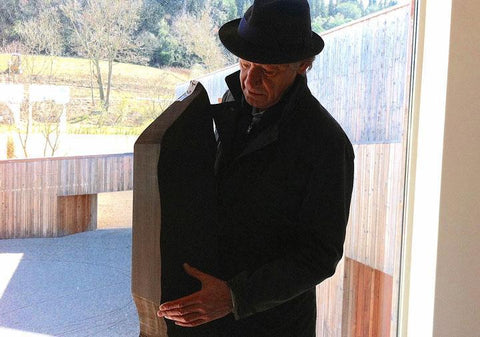
LA - The parable that you often propose as a work of art seems to me to go beyond alchemy as a discipline or techné, going even to the question of identity, of the I Am. As we get closer and closer to a concave parabolic mirror, our image is absorbed and disappears.
MB - The parabola, the concave mirror, overwhelmed me. At first I held it in the palm of my hand, noticing its luminous evocation, it was a container of light. But then, one day, especially by enlarging its dimensions, I noticed something else; I was shocked, stunned, when the image of all of myself disappeared inside it. In the moment in which the eye coincides with the focus of the parabola's curvature at a single point, the image disappears and from that point on, what is reflected upside down is reflected upright and no longer upside down. That moment of transition is shocking, it is as if with a concave mirror we had an illumination within reach and reproducible at any moment, a sort of portable meditation.
The circumference also in this seems to me magical, paradoxical, unsustainable: Here the center disappears together with the image and the vision surrounds it! Perhaps Ibn Arabi – and Guenon who quotes him – are not right? And therefore – likewise – Hermes, the Fathers of the Church, but also Blaise Pascal.

LA - What is the connection between an artistic and philosophical sensibility like yours and the understanding of reality deriving from the alchemical experience?
MB - I studied Galileo Galilei's thought at university, but I did it within the philosophy of science, while nothing could really satisfy me anymore. On the contrary, I found that scientific research increasingly took away the human being from its essence. Despite every possible scientific discovery, man always remained the same, no matter how great the implications of what he discovered and saw. Therefore, the human material did not change.
Then it seemed to me - and I still think so - that without abandoning current culture, based on the importance that science has today, we can, with art, touch this profound essence of man. And mine, obviously.
Man, with his ingenuity, frees the worlds of their own weight, dealing, in reality, with only a small part of the total dimension of being… Now, this is the question I want to ask… Is it precisely through that mystery that is ingenuity, in all its possible forms, that man can participate in a true change of his physical and mental structure?

